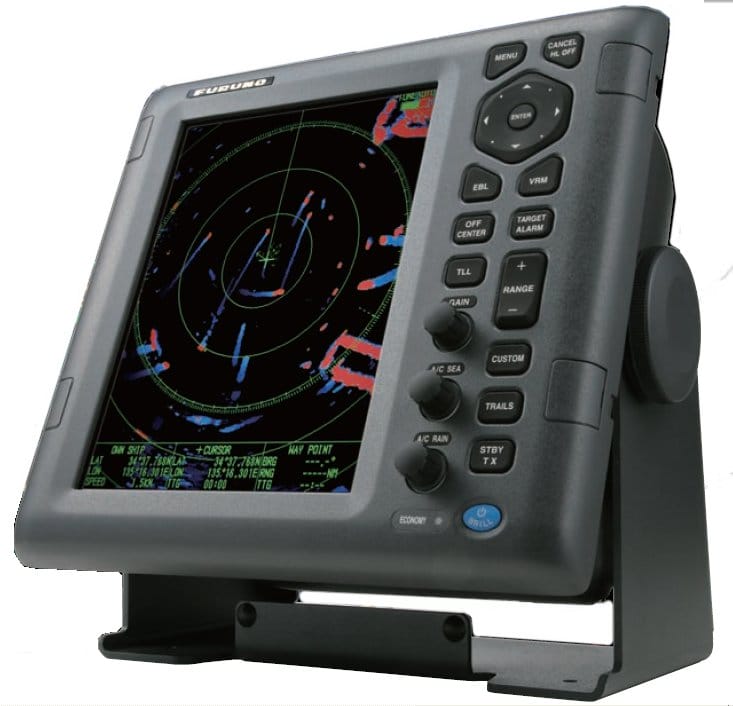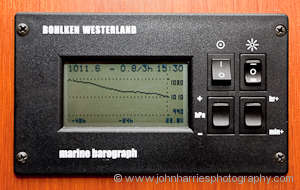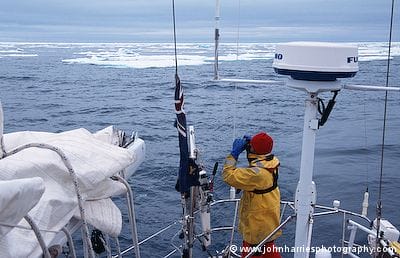Electronics/Software
Child Topics:
Click for TOC or scroll down for details
Articles in this topic:
- Autopilot Buyer’s Guide
- Integrating and Documenting NMEA 0183 and 2000 Networks
- Maretron—Better NMEA 2000 Cabling
- New Satellite Communications Systems
- Iridium Update 2017
- Marine Electronics—Ease of Use Trumps Features
- A Fundamental Danger Of NMEA 2000 Networks
- Arctic Gear Test—Radar
- Arctic Gear Test—Electronic Navigation
- AIS Revisited
- Nexus Instruments, Great Gear And Great Culture
- Bohlken Westerland Barograph
- Our preferred watch
- AIS—See And Be Seen
- Q&A: Radar Scanner Position
- Q&A: Forward Scan Sonar
- Silva Marine, NEXUS Network Wind Instruments, Problems
- ICS Navtex, Problems
- The Joys And Tears Of TurboCAD
- EchoPilot Forward Scan Sonar FLSII
-
Autopilot Buyer’s Guide
73 CommentsReading Time: 14 minutesMembersRead more: Autopilot Buyer’s GuideHow smart and expensive an autopilot do we need for offshore shorthanded cruising? Lots of options. Here’s how to make sure we don’t select the wrong one and that we get what we paid for.
-
Integrating and Documenting NMEA 0183 and 2000 Networks
23 CommentsReading Time: 8 minutesMembersRead more: Integrating and Documenting NMEA 0183 and 2000 NetworksTo be reliable, marine electronics networks must be properly documented. Here’s a quick and easy way to do that.
-
Maretron—Better NMEA 2000 Cabling
52 CommentsReading Time: 5 minutesMembersRead more: Maretron—Better NMEA 2000 CablingThere’s a lot of unreliable poorly-supported gear in the marine electronics space, so John gets super excited when he finds kit that goes against that trend, and even more so when it reduces an intrinsic danger.
-
New Satellite Communications Systems
45 CommentsReading Time: 7 minutesMembersRead more: New Satellite Communications SystemsFor nearly 20 years billionaires have been promising that worldwide, fast, always on, and reasonably priced internet, that we could use anywhere on our boats, was just around the corner, but now Matt makes a convincing case that we really will see this soon, and why things are different and better this time. Most important of all, he explains what we need to do to get ready.
-
Iridium Update 2017
13 CommentsReading Time: 4 minutesFreeRead more: Iridium Update 2017John takes a look at the latest news on Iridium satellite phones and GO!, some real world reports from users, and finishes with some solid purchase and usage recommendations.
-
Marine Electronics—Ease of Use Trumps Features
82 CommentsReading Time: 4 minutesFreeRead more: Marine Electronics—Ease of Use Trumps FeaturesJohn is back on one of his favourite hobby horses: tips for buying the right marine electronics for going offshore…rather than the right marine electronics to enrich the companies that make this stuff. And he wants your help on this in the comments.
-
A Fundamental Danger Of NMEA 2000 Networks
83 CommentsReading Time: 3 minutesFreeRead more: A Fundamental Danger Of NMEA 2000 NetworksNMEA 2000 Networks are fast becoming the standard on sail and motorboats but it’s important to guard against a fundamental weakness that can leave us with no position or radar and few good options.
-
Arctic Gear Test—Radar
61 CommentsReading Time: 4 minutesFreeRead more: Arctic Gear Test—RadarA reliable radar is the most important piece of electronic gear on a boat sailing in northern waters. In this chapter we discuss how our Furuno 1832 radar performed during our 10,000-mile Arctic voyage.
-
Arctic Gear Test—Electronic Navigation
21 CommentsReading Time: 5 minutesFreeRead more: Arctic Gear Test—Electronic NavigationThis was our first Arctic voyage since installing electronic navigation on “Morgan’s Cloud”. In this chapter we report on how it went.
-
AIS Revisited
15 CommentsReading Time: 3 minutesFreeRead more: AIS RevisitedI’ve written before on the potential benefits of AIS for small craft, and having used it far more since then, it’s time for an update. After being initially impressed with it, and the capabilities it offers beyond radar, has it lived up to that first impression? A good test was when we recently crossed to […]
-
Nexus Instruments, Great Gear And Great Culture
8 CommentsReading Time: 2 minutesFreeRead more: Nexus Instruments, Great Gear And Great CultureReasonably Priced Seven years ago, when KVH stopped supporting our previous sailing instrument system, we looked at Brooks and Gatehouse but balked at the cost and instead settled on a new NX2 system from Nexus at less than half the price.
-
Bohlken Westerland Barograph
8 CommentsReading Time: < 1 minuteFreeRead more: Bohlken Westerland BarographIn these days of readily available weather forecasts and satellite- or HF radio-delivered GRIB files, it could perhaps be argued that the barometer has been supplanted as a weather forecasting device. However, in our opinion, that supposition would be a serious mistake.
-
Our preferred watch
3 CommentsReading Time: 2 minutesFreeRead more: Our preferred watchQuestion: What do you use for time keeping at sea? If you use a wristwatch then which one?
-
AIS—See And Be Seen
4 CommentsReading Time: 4 minutesFreeRead more: AIS—See And Be SeenOne thing that most sailors dread is poor visibility. Throw in high levels of shipping traffic and you have a perfect recipe for sleepless nights.
-
Q&A: Radar Scanner Position
46 CommentsReading Time: 3 minutesFreeRead more: Q&A: Radar Scanner PositionQuestion: What is your preference regarding the best place to mount a radar antenna? As far as we can tell from the pictures of Morgan’s Cloud you have mounted yours on a pole aft. Our previous experience with radars tells us that the antenna should be as high and free as possible. Wouldn’t a radar […]
-
Q&A: Forward Scan Sonar
4 CommentsReading Time: 3 minutesFreeRead more: Q&A: Forward Scan SonarQuestion: We are looking at sonar options for use in areas with poor charts and low visibility. Our interest is primarily for checking anchorages and narrow passages, looking for obstructions. We have a small plotter/sounder in the dinghy, but nobody wants to go out in the dink when it is cold and rainy (and warm […]
-
Silva Marine, NEXUS Network Wind Instruments, Problems
3 CommentsReading Time: 2 minutesFreeRead more: Silva Marine, NEXUS Network Wind Instruments, ProblemsThe Problem In 2005, KVH abruptly stopped supporting the Quadra system, which had served us well for many years, albeit after its own set of teething problems. After considering most of the options and nearly settling on B&G, but finally being put off by a sudden and substantial increase to their already, in our opinion, […]
-
ICS Navtex, Problems
1 CommentReading Time: 2 minutesFreeRead more: ICS Navtex, ProblemsThe Problem In 1999 our trusty old Furuno combination weather fax/navtex machine died after many years of faithful service. We decided to use our PC for weather fax and buy a dedicated navtex. We selected a unit from ICS.
-
The Joys And Tears Of TurboCAD
0 CommentsReading Time: 2 minutesFreeRead more: The Joys And Tears Of TurboCADFor the last few years we have been using TurboCAD for visualizing and designing projects on Morgan’s Cloud. TurboCAD is a great value, with much of the functionality of systems costing many times more, at just US$150, and you can often get it discounted to as little as US$80.00 by shopping around on the Internet.
-
EchoPilot Forward Scan Sonar FLSII
13 CommentsReading Time: < 1 minuteFreeRead more: EchoPilot Forward Scan Sonar FLSIIWe have found that having a forward scan sonar has made exploring in the high latitudes safer and more feasible. Instead of feeling our way along at 2 knots when off the charts, we can now travel confidently at 6 knots, since the forward scan reaches out up to 200 meters ahead. Also, the sounder […]
















